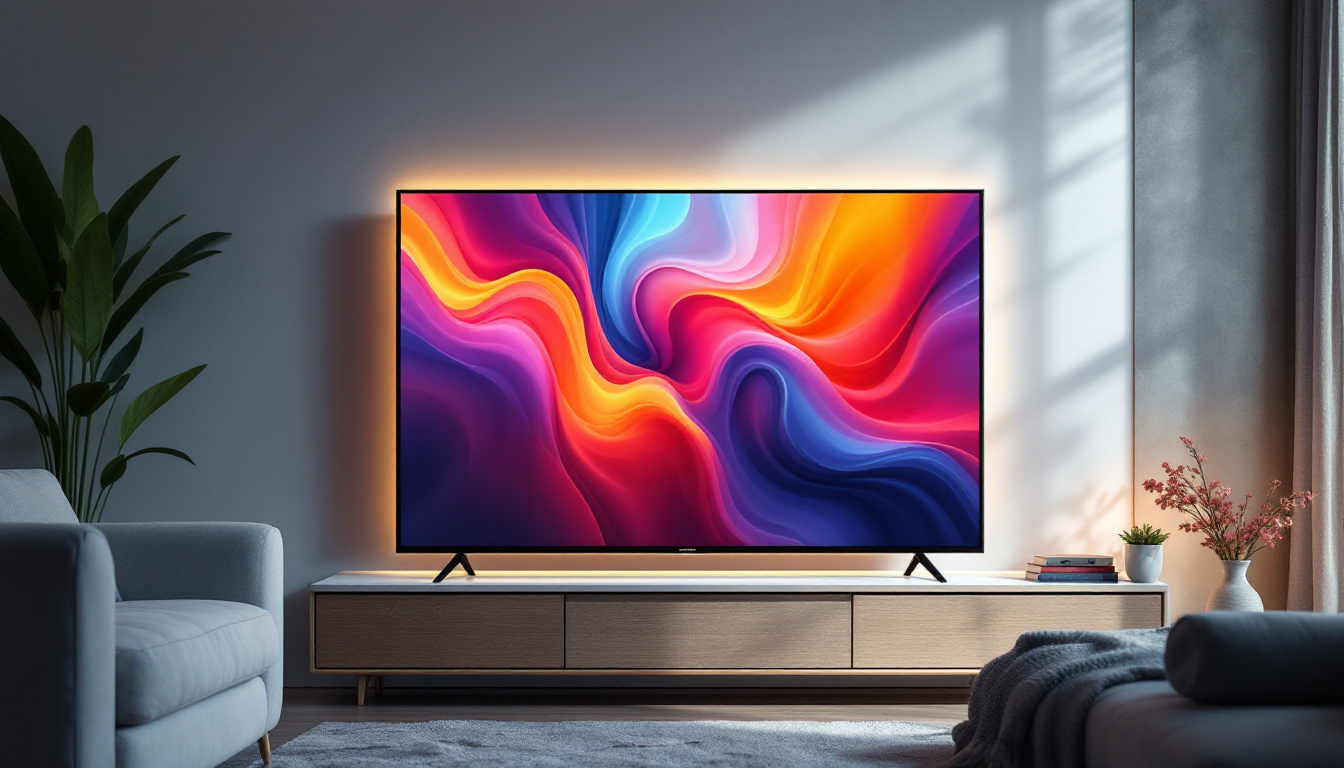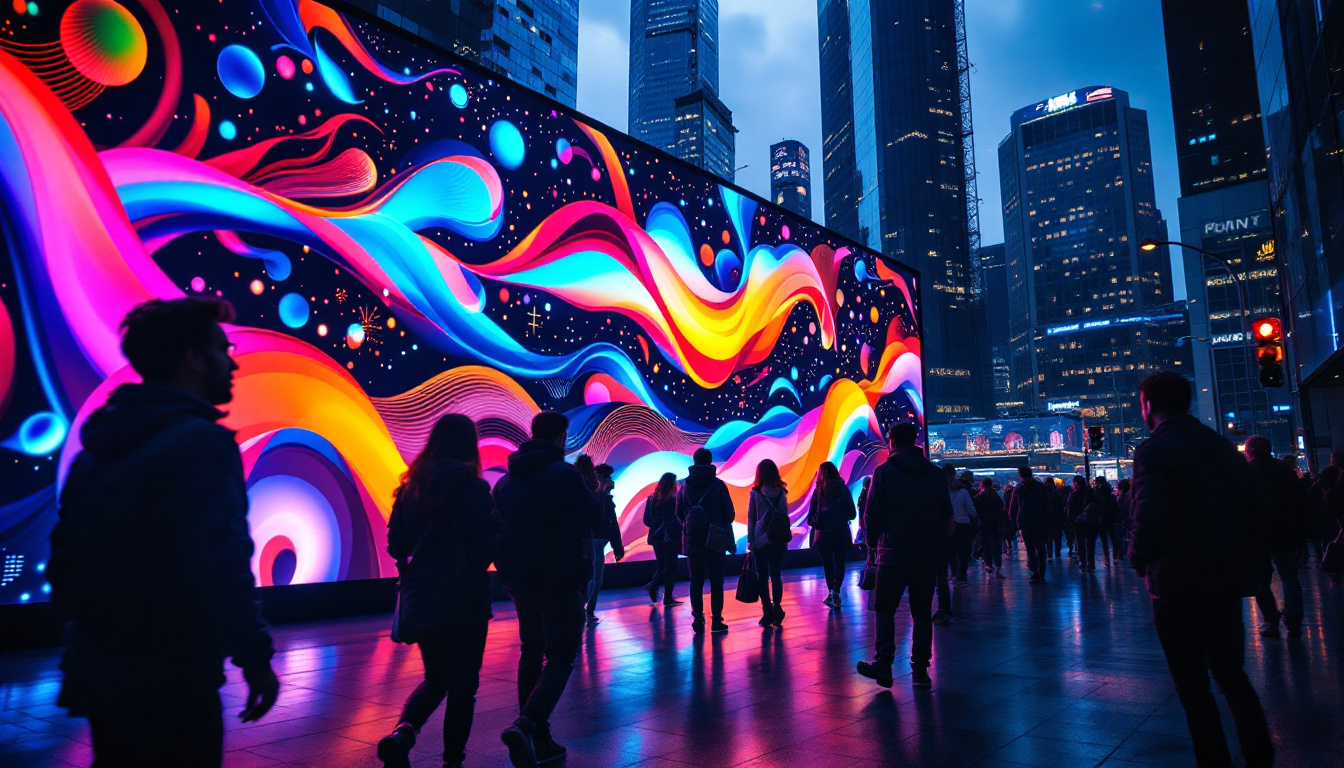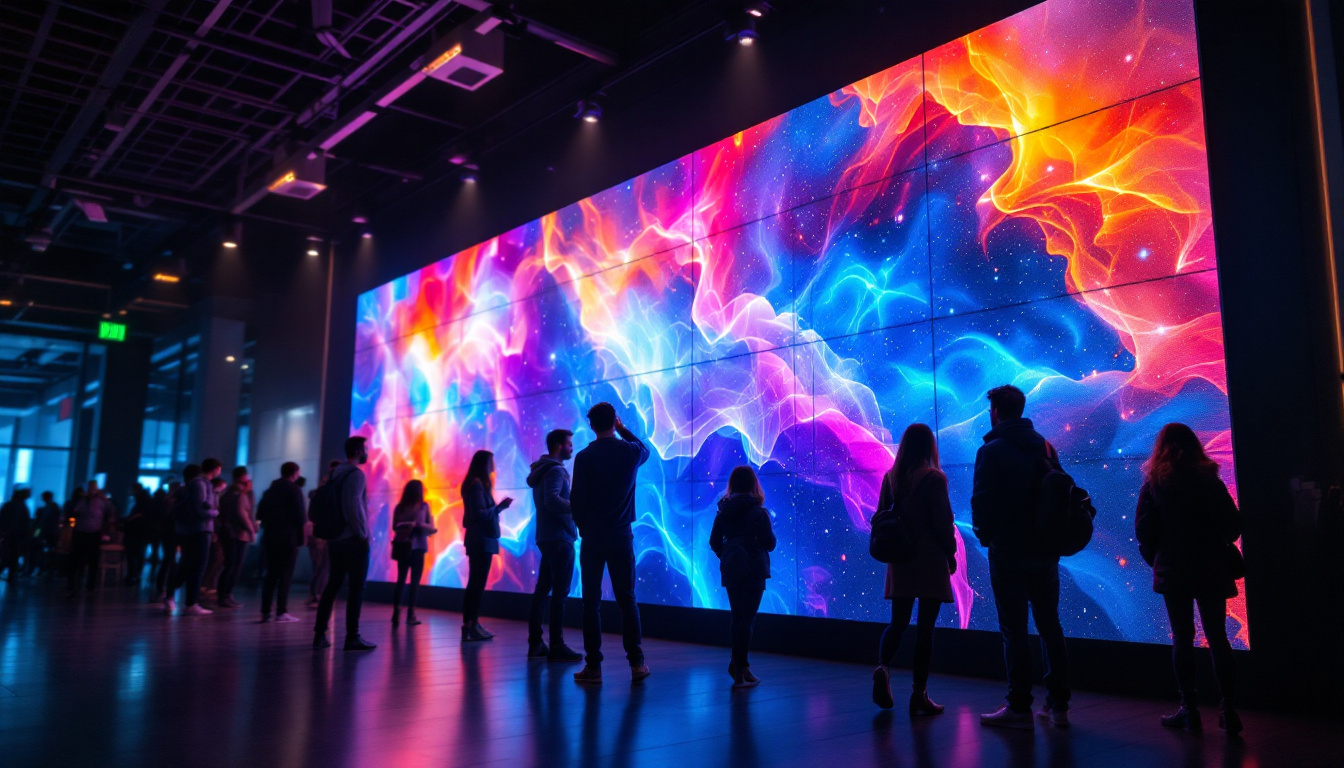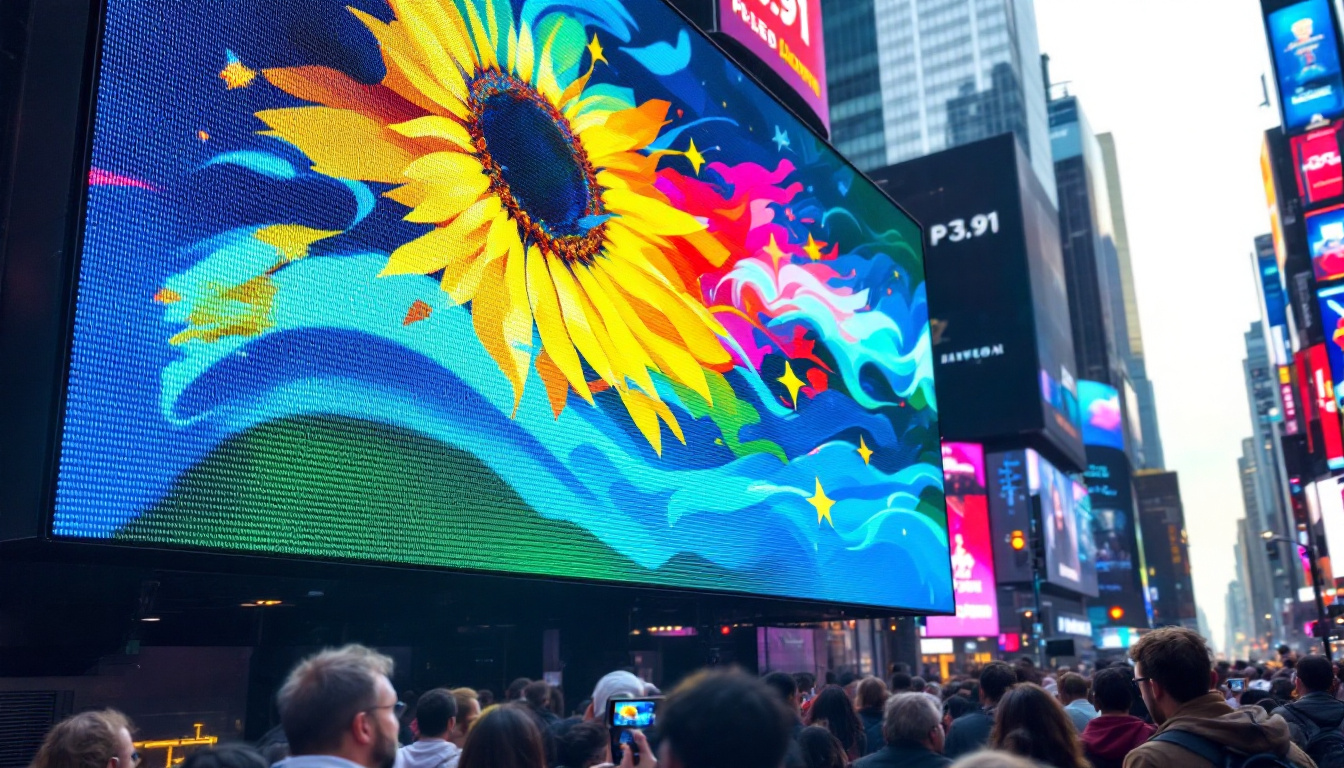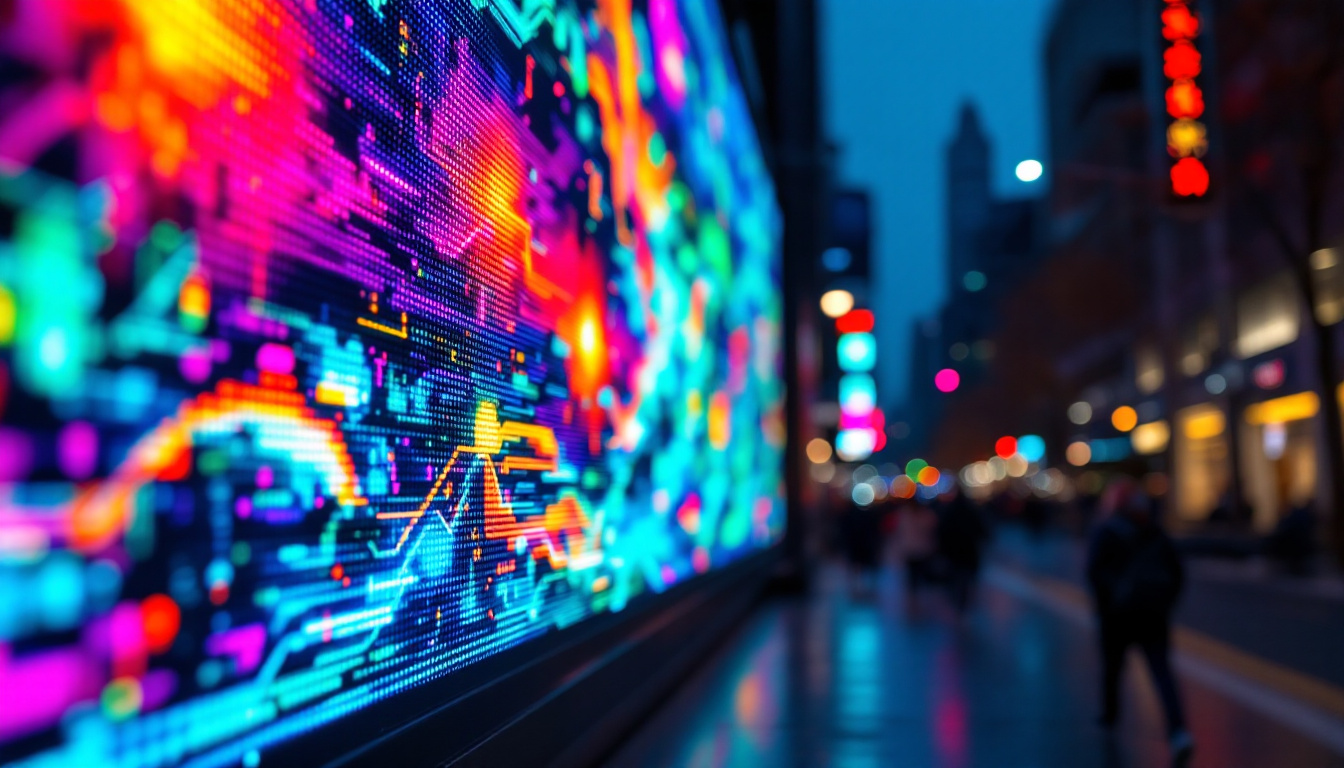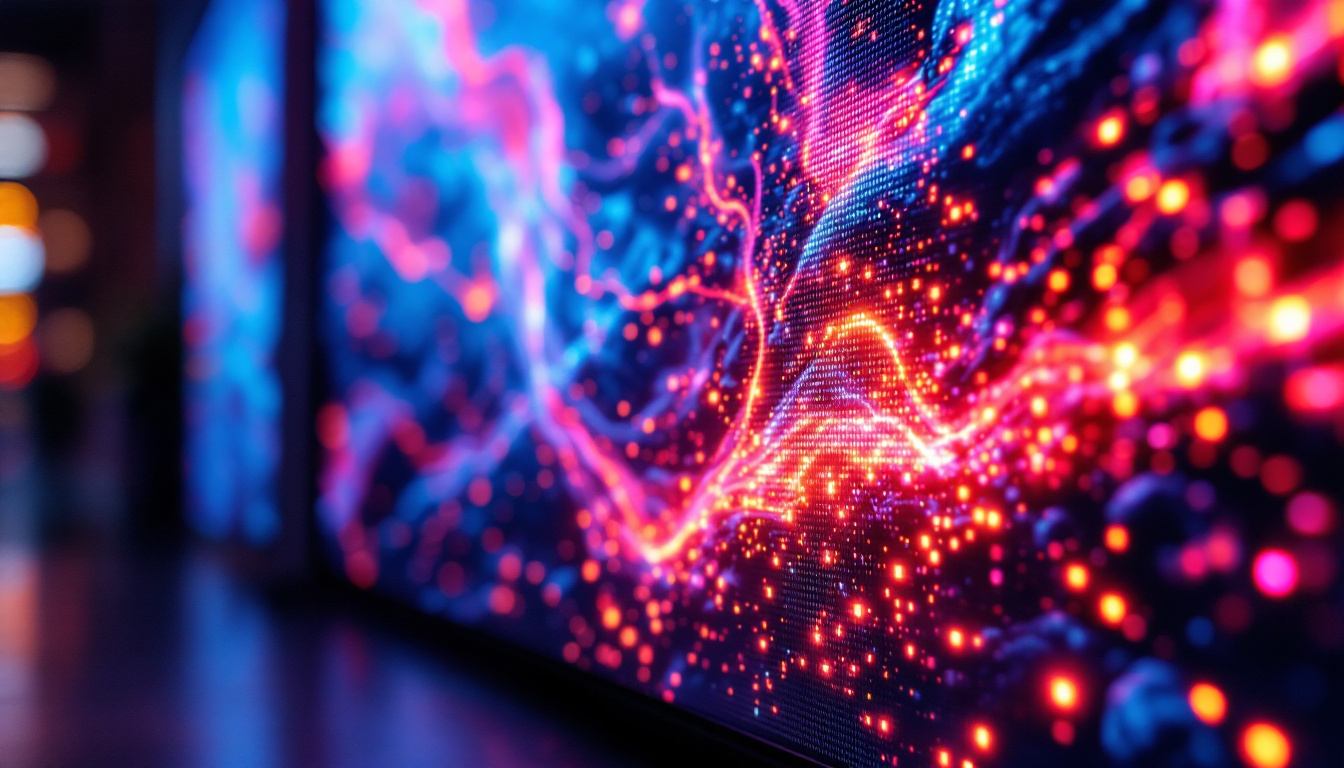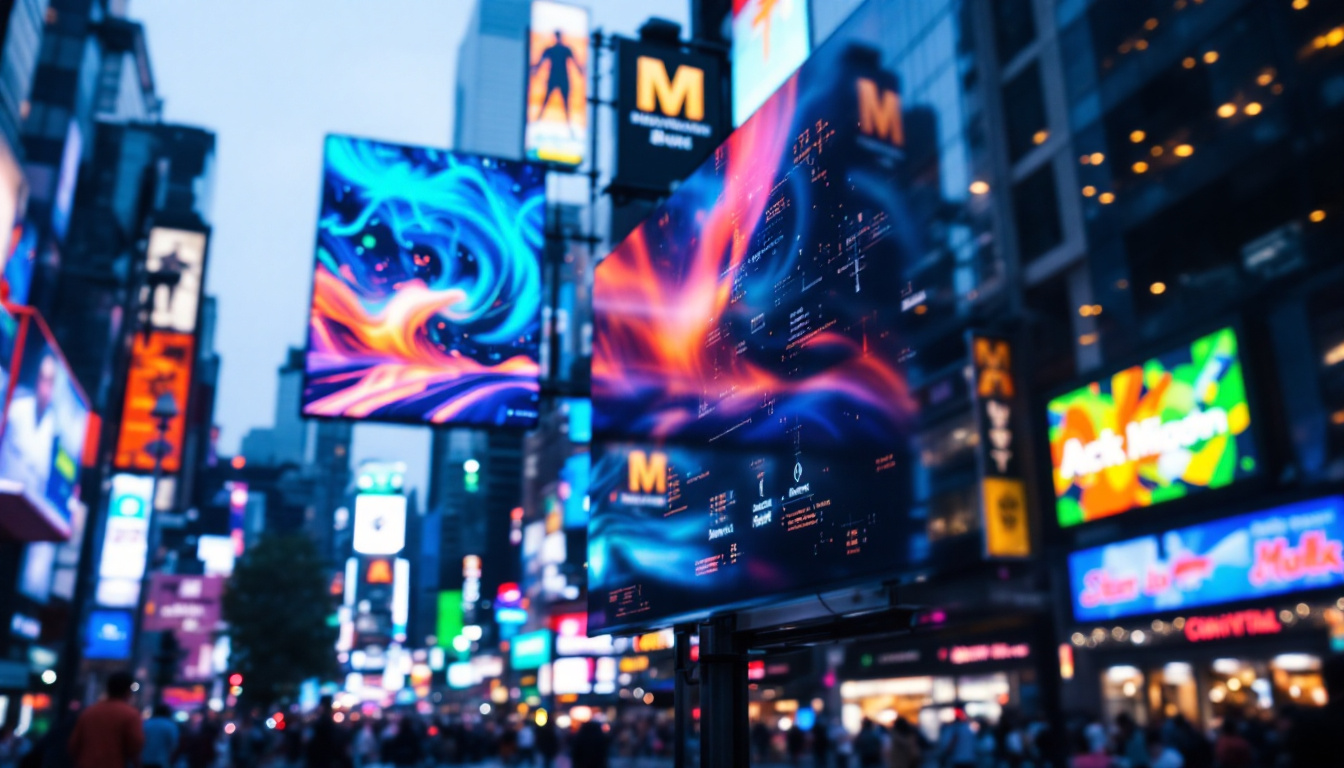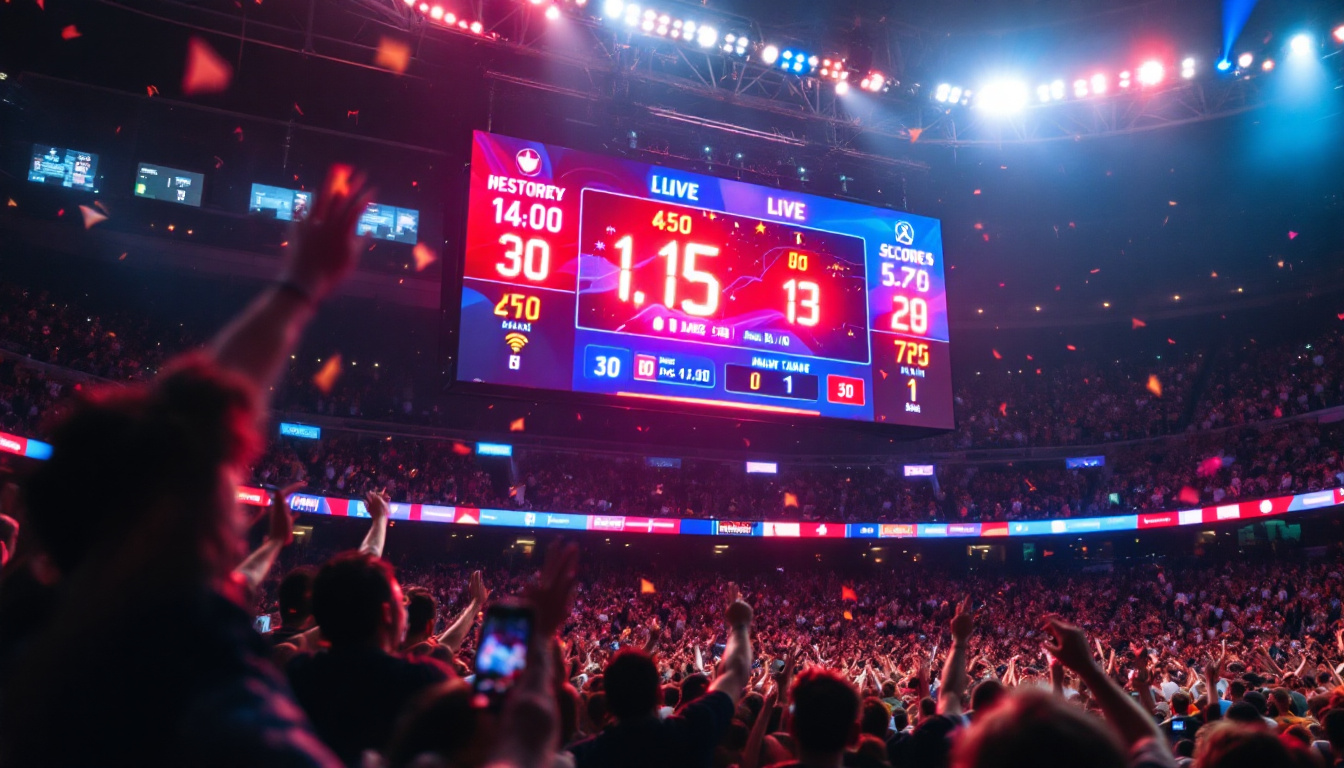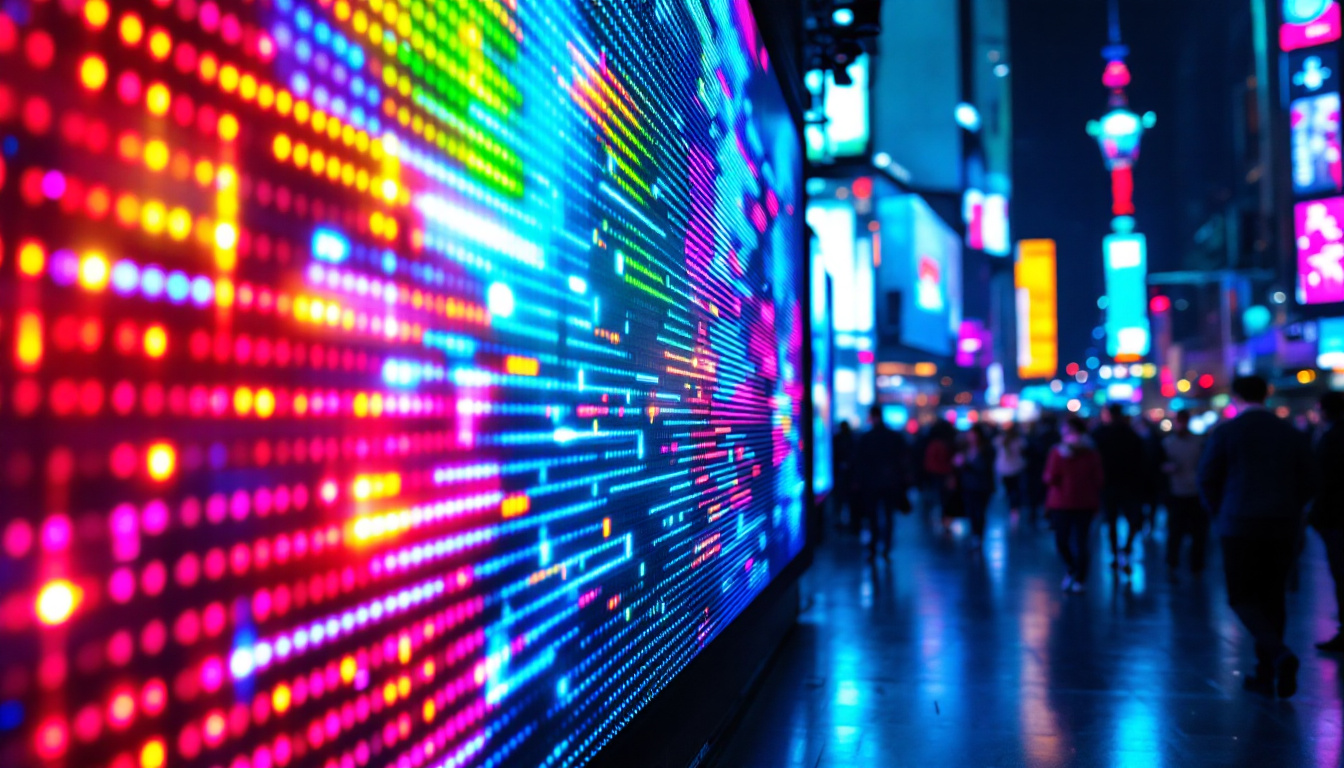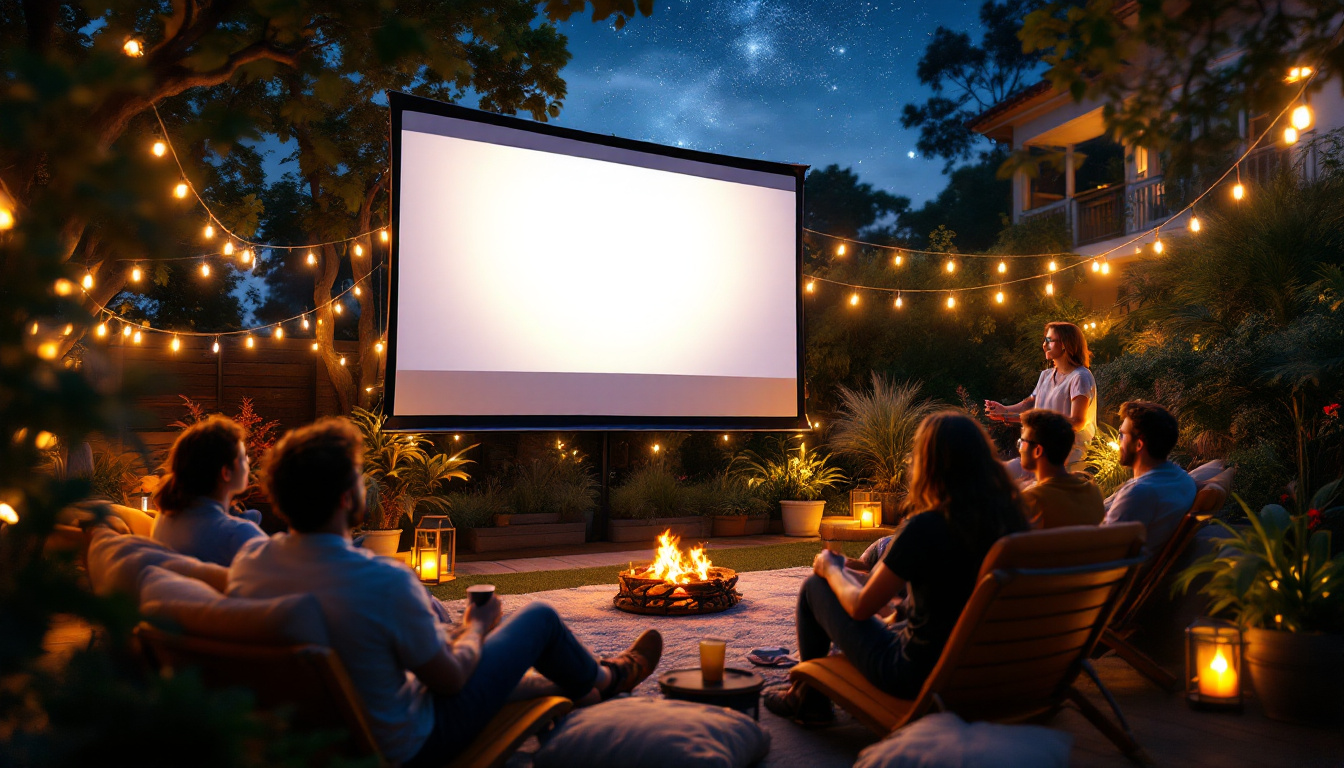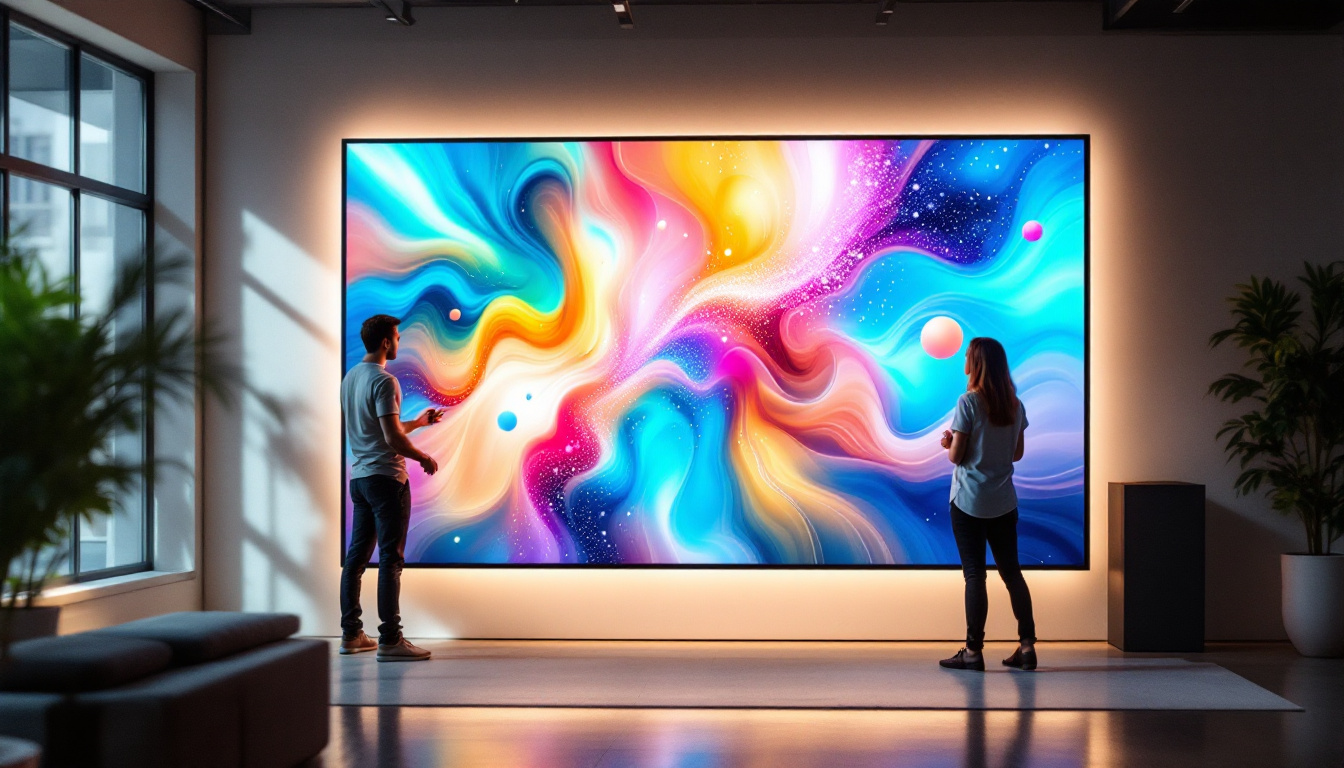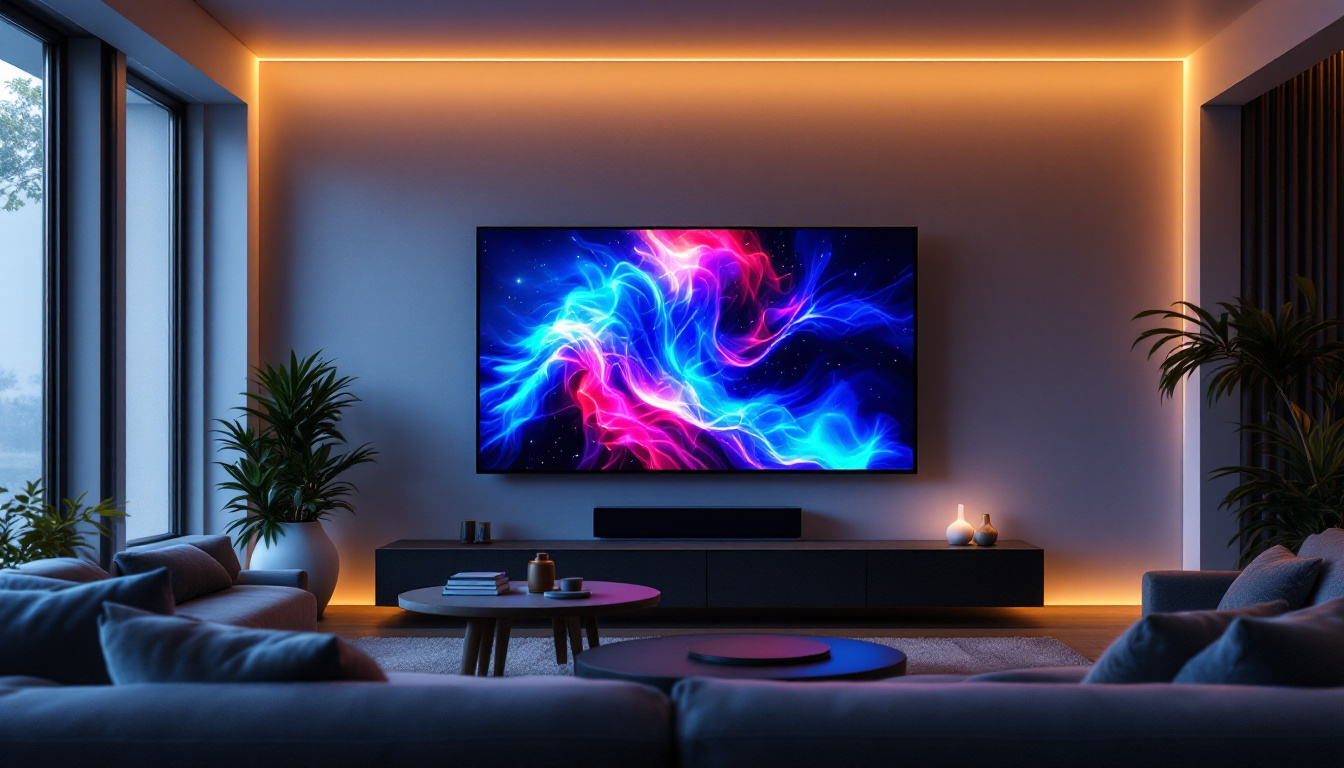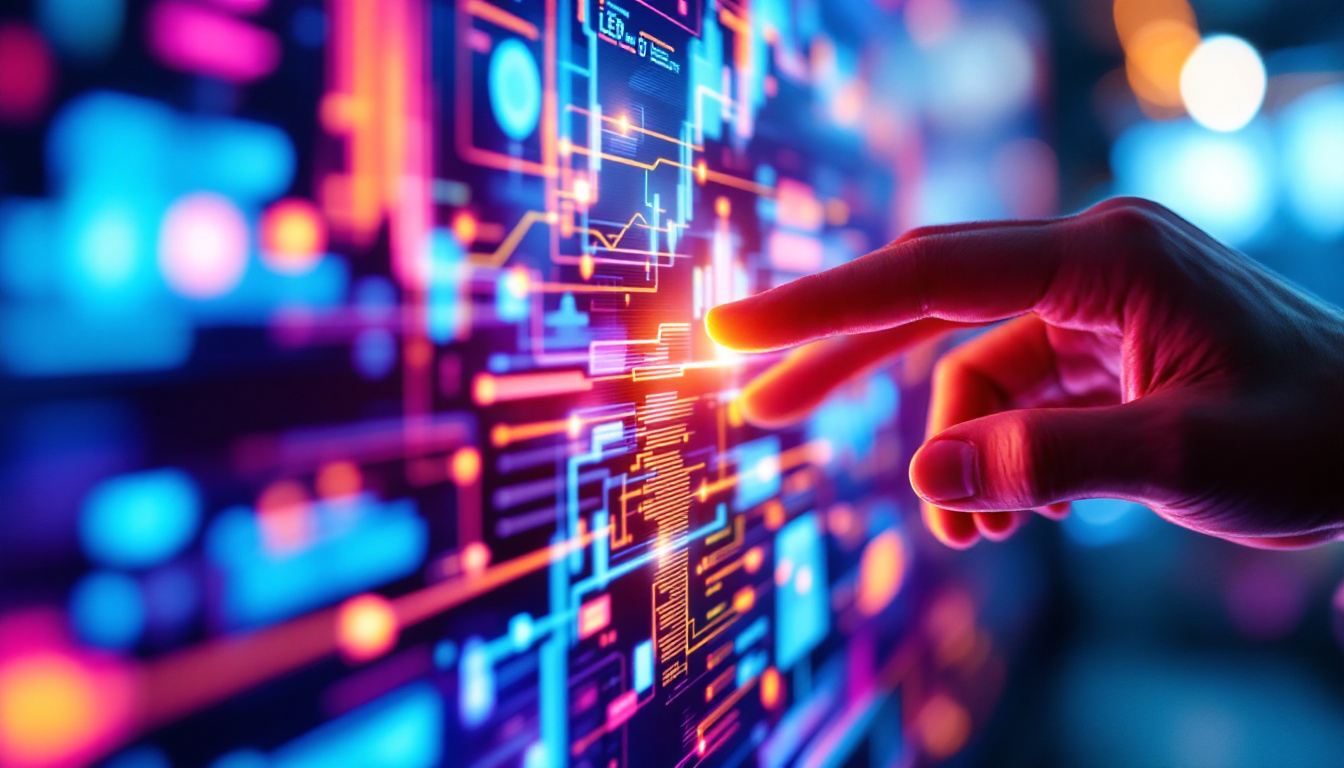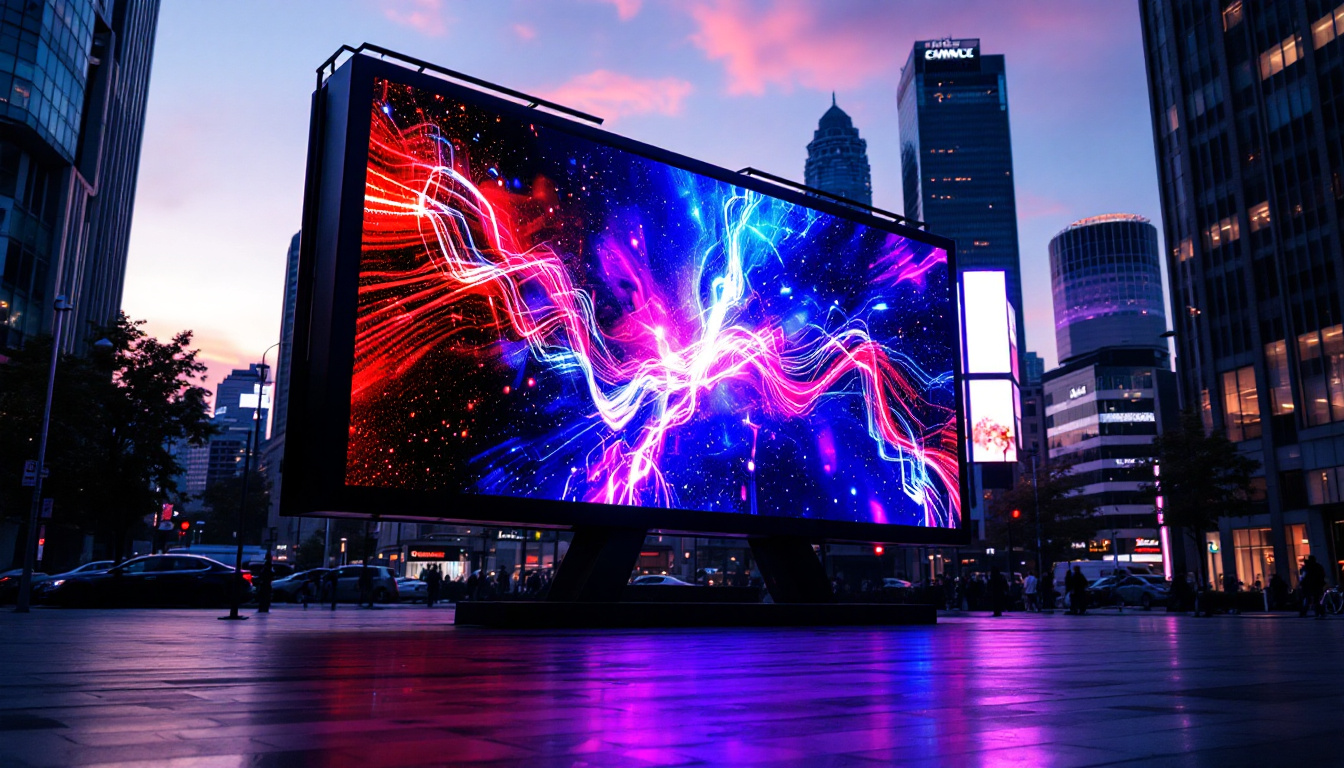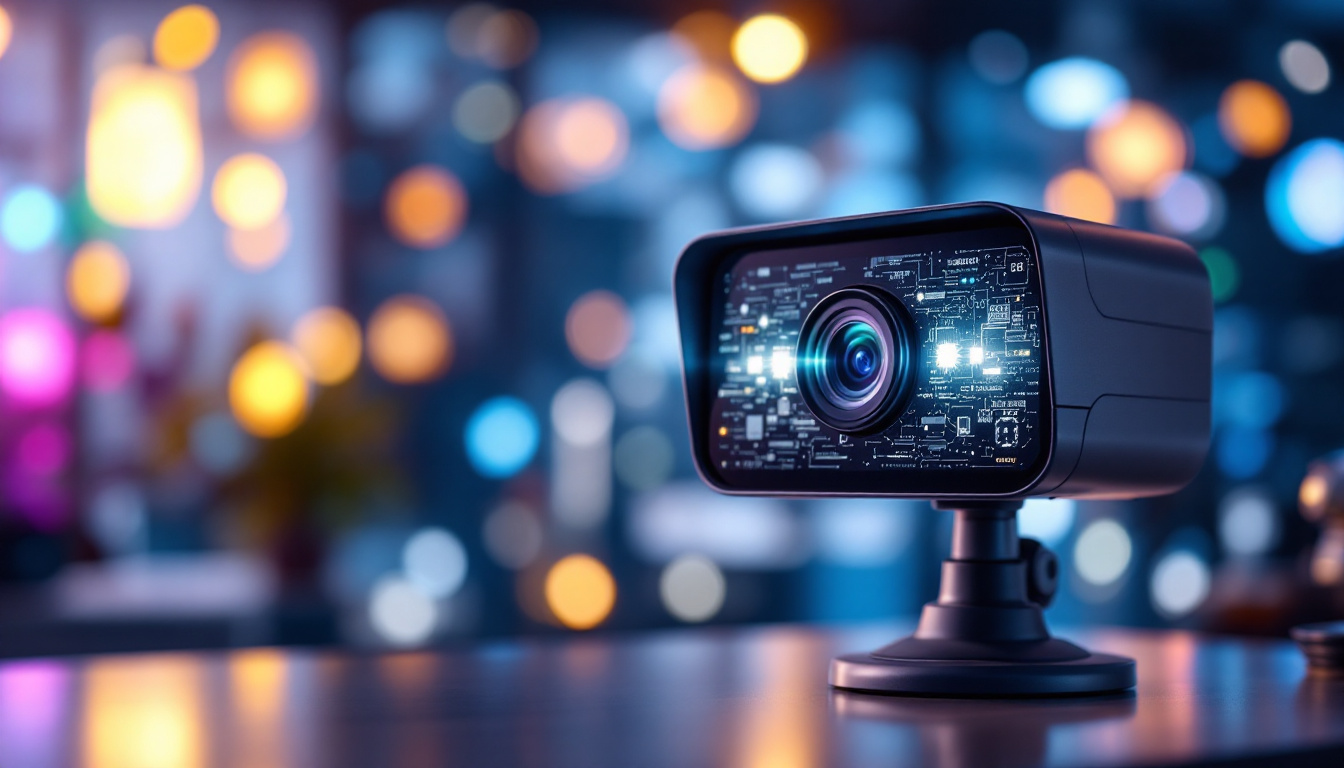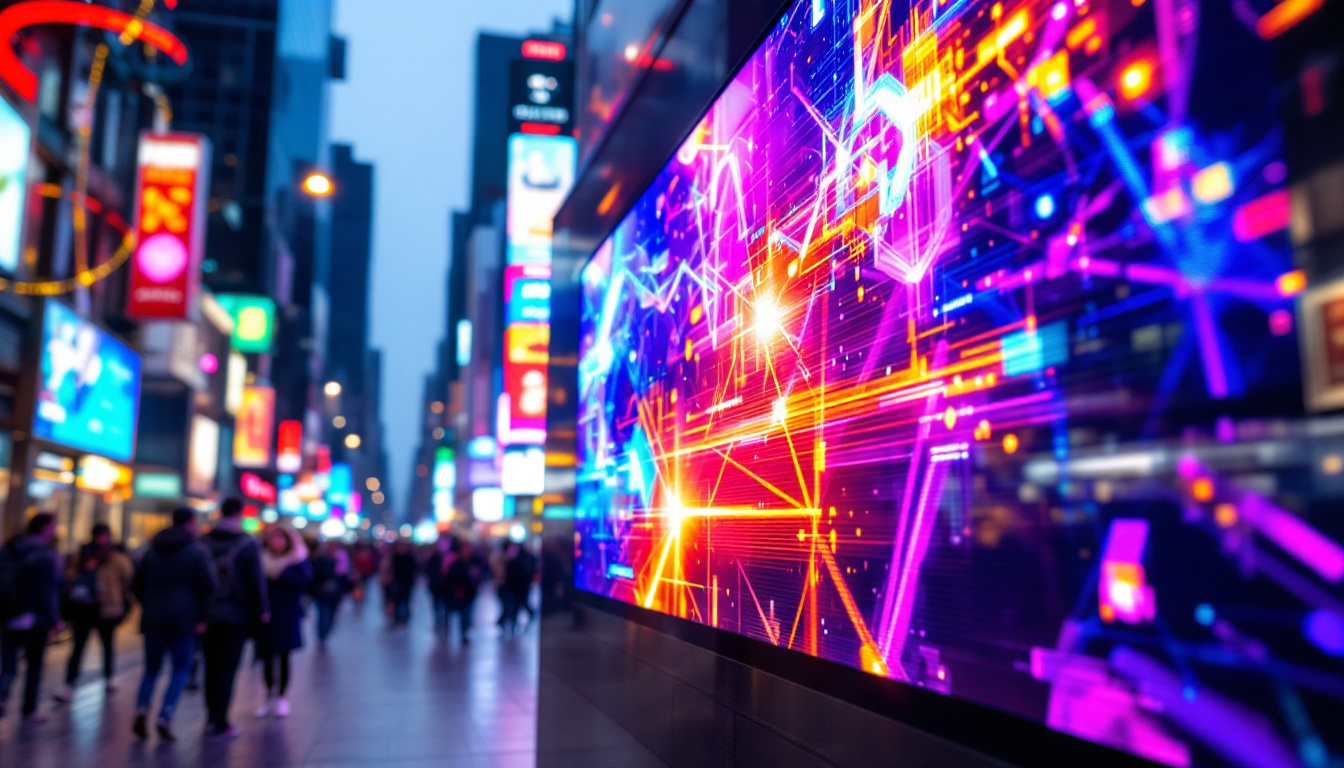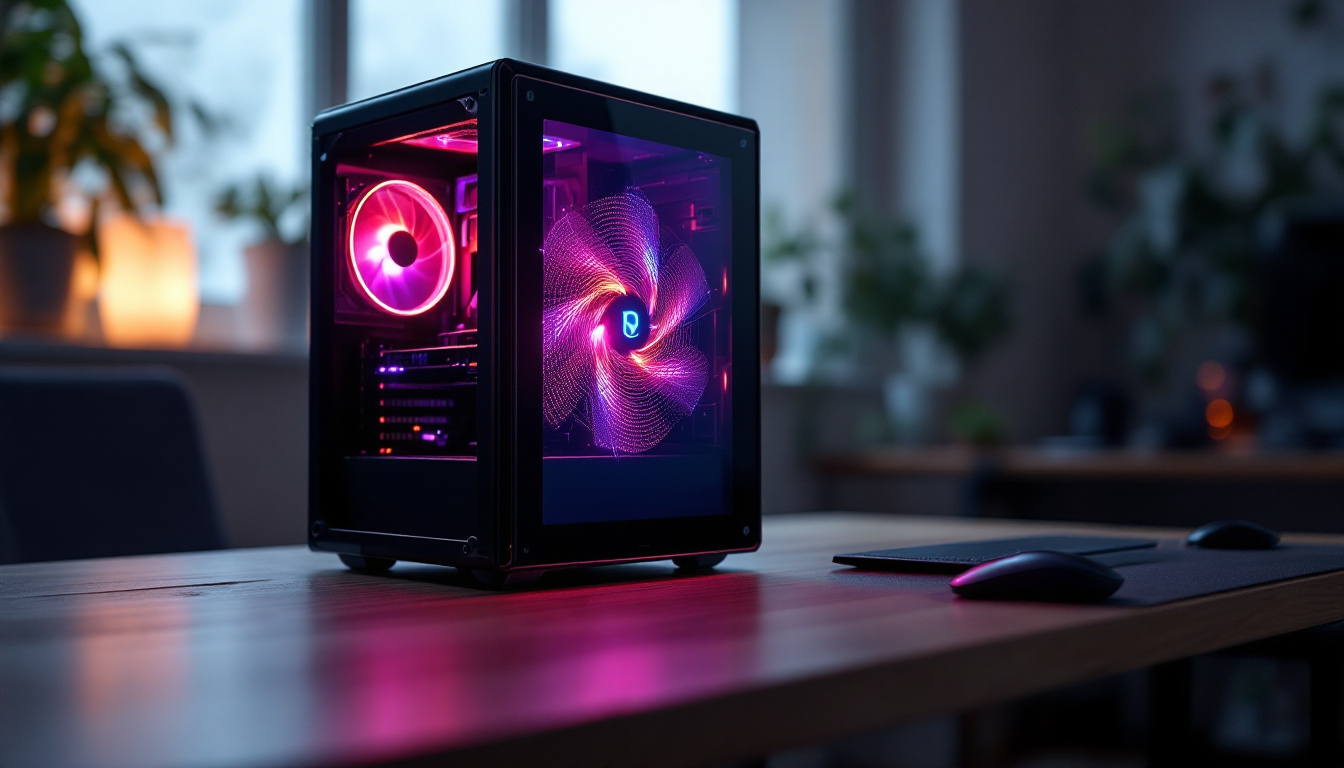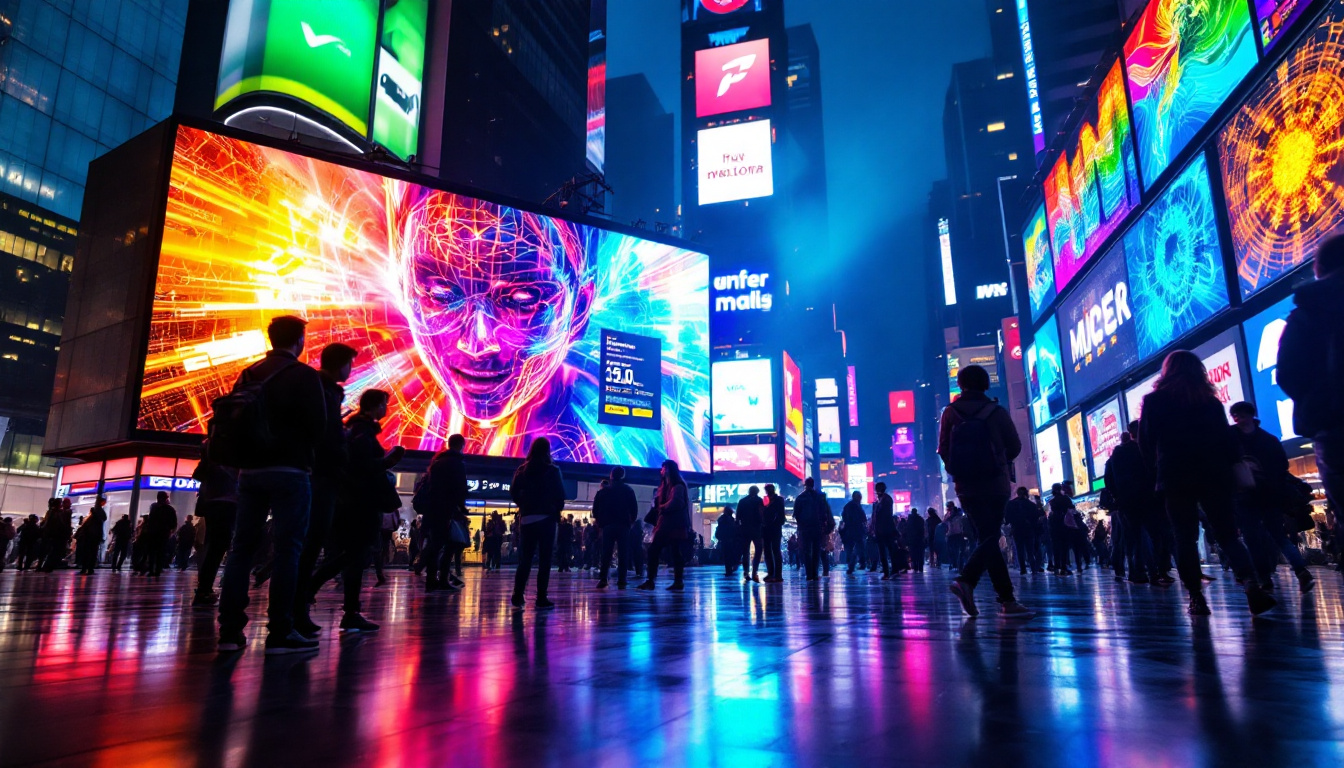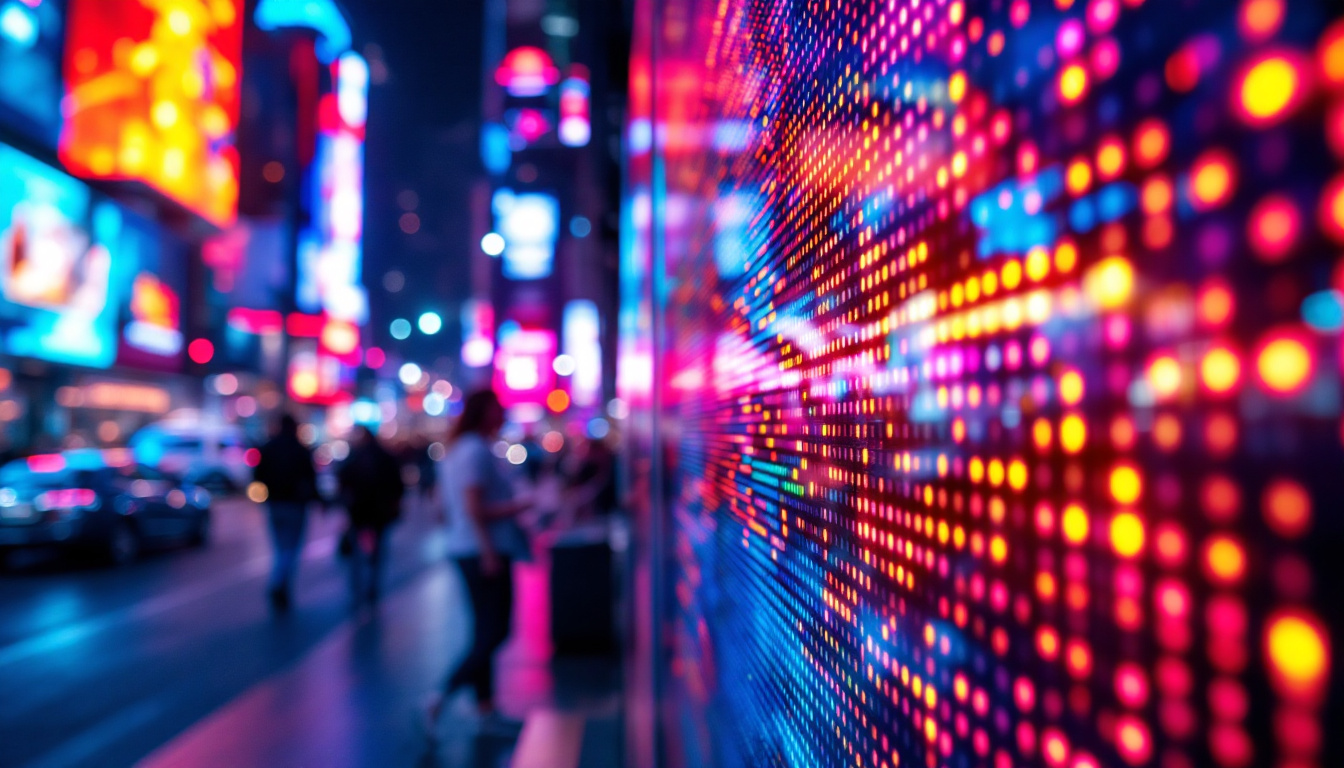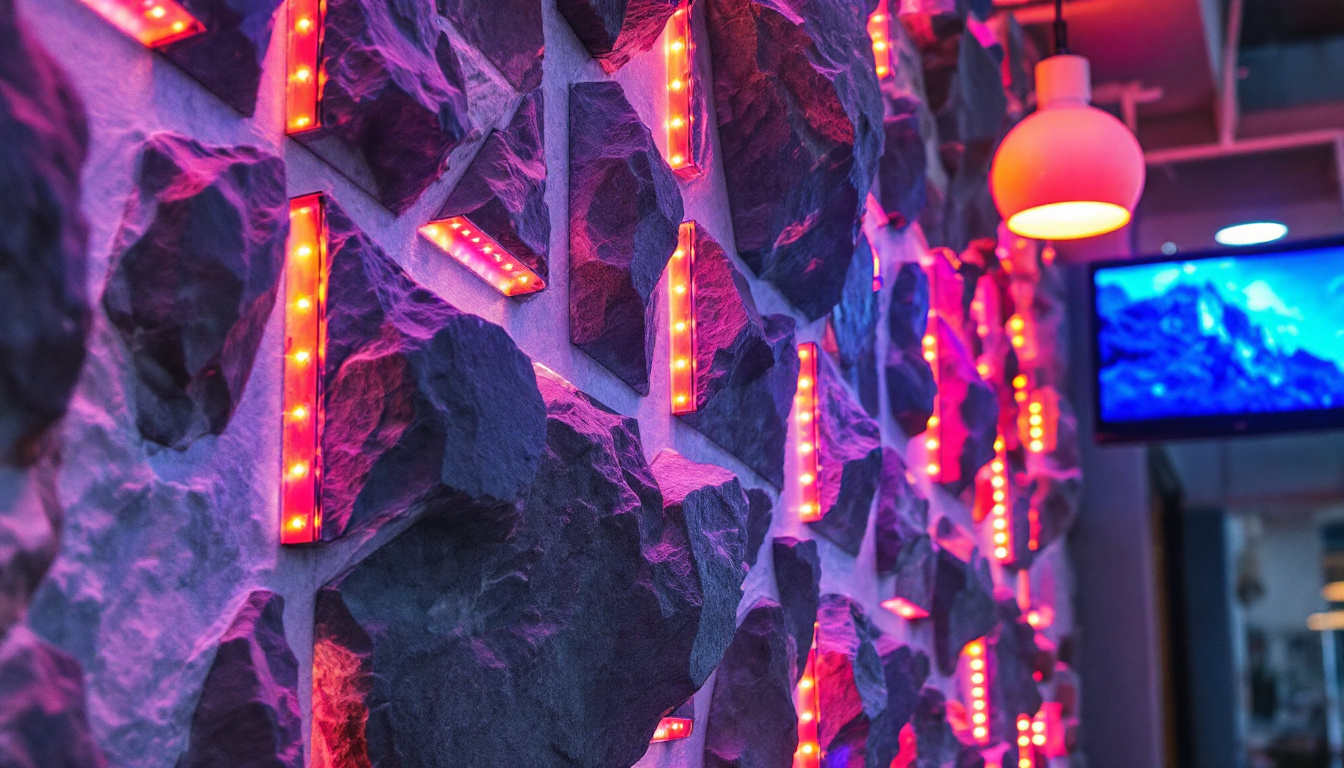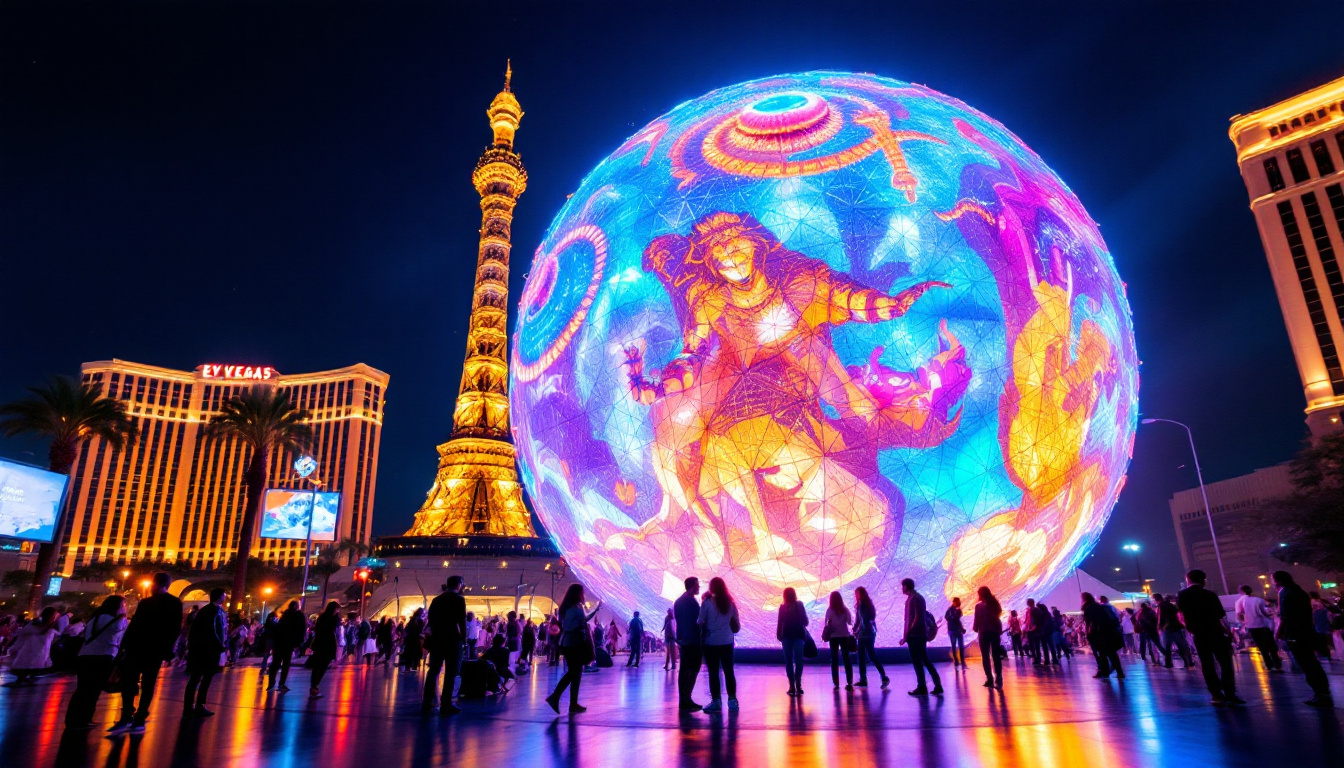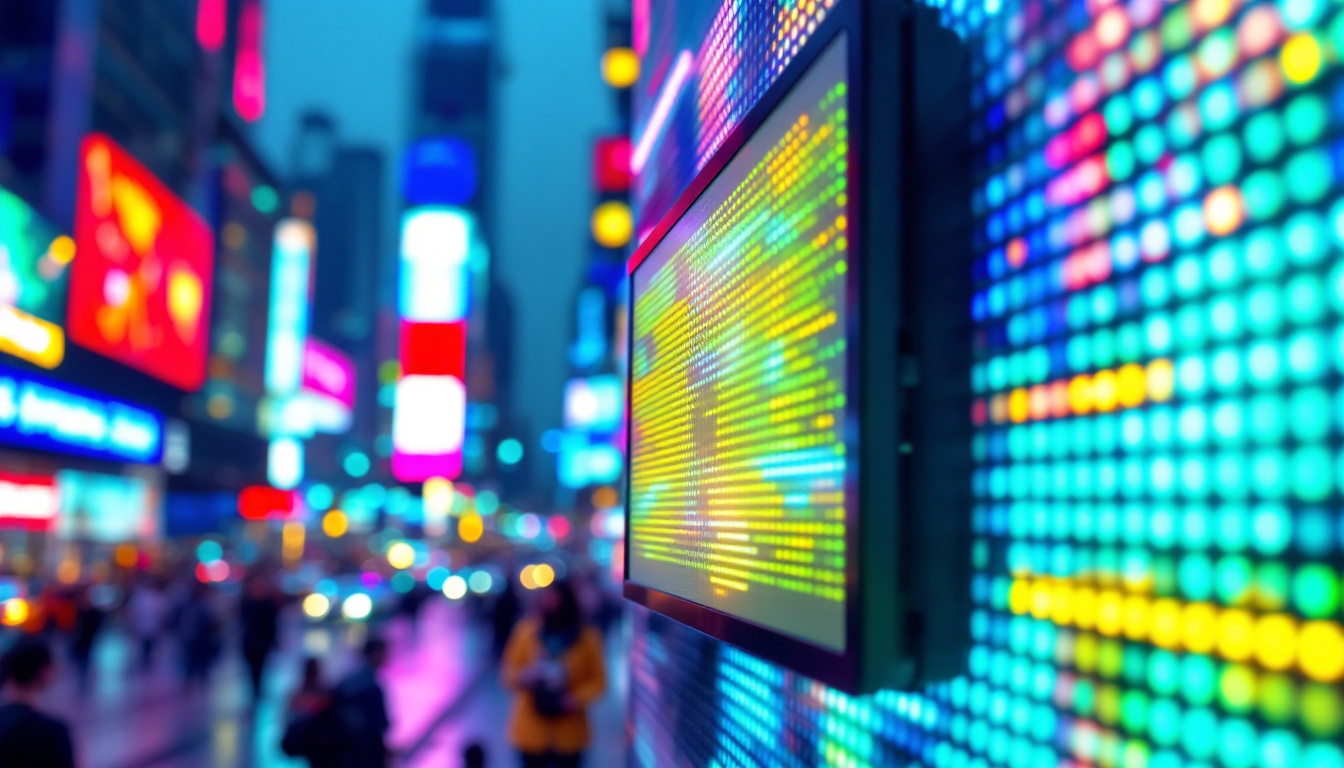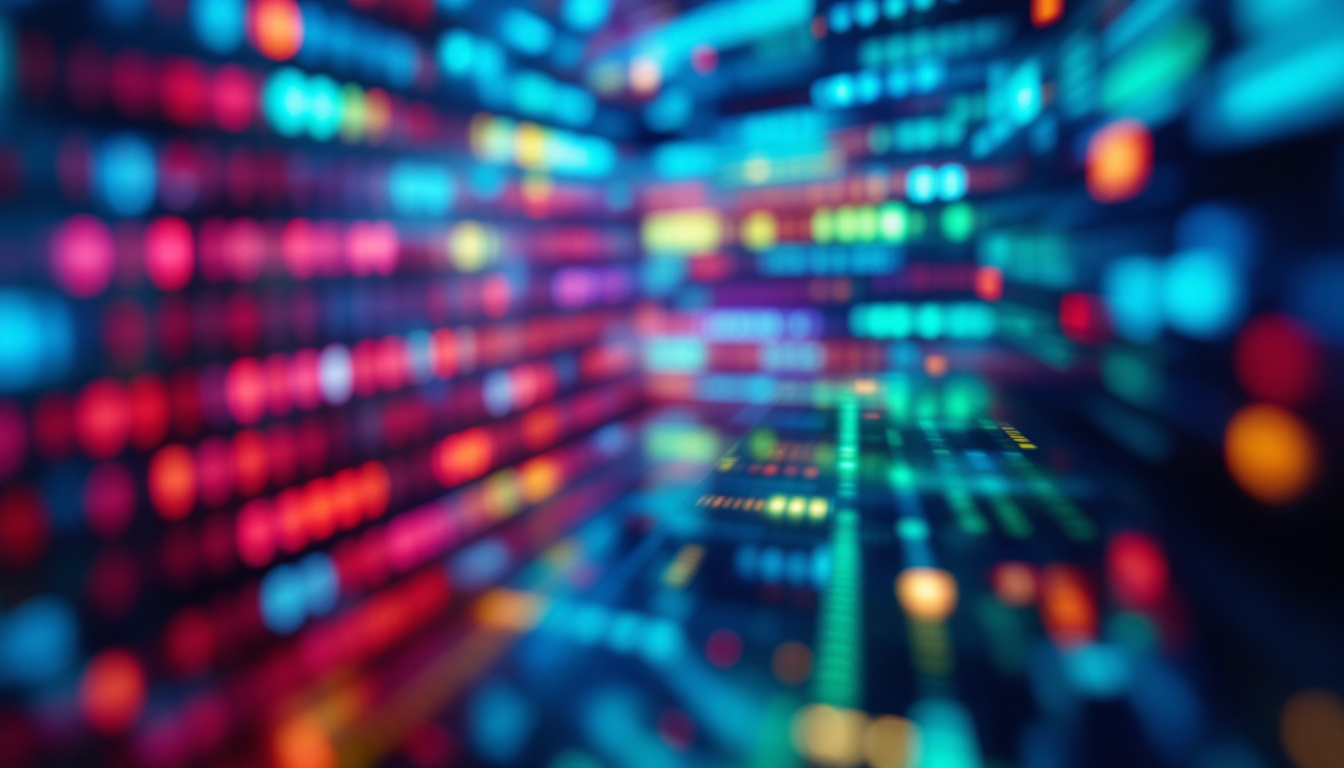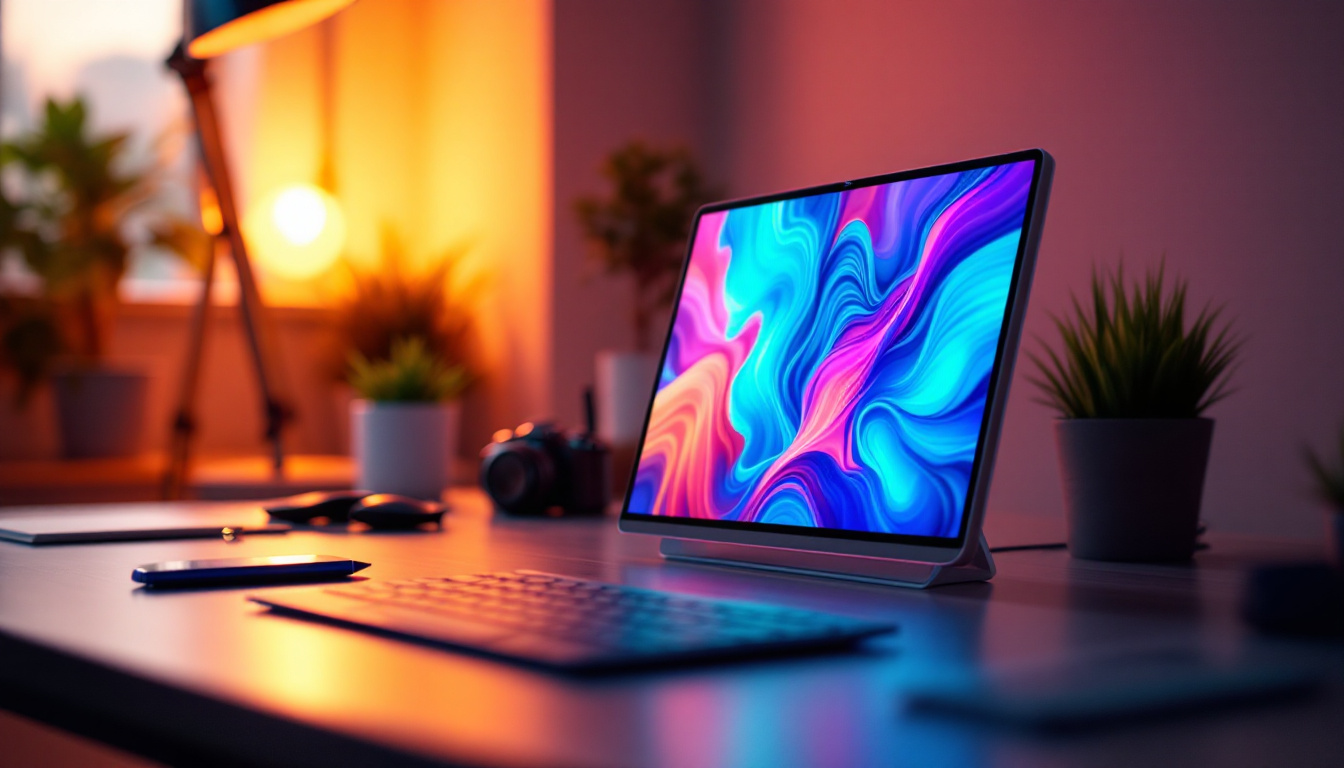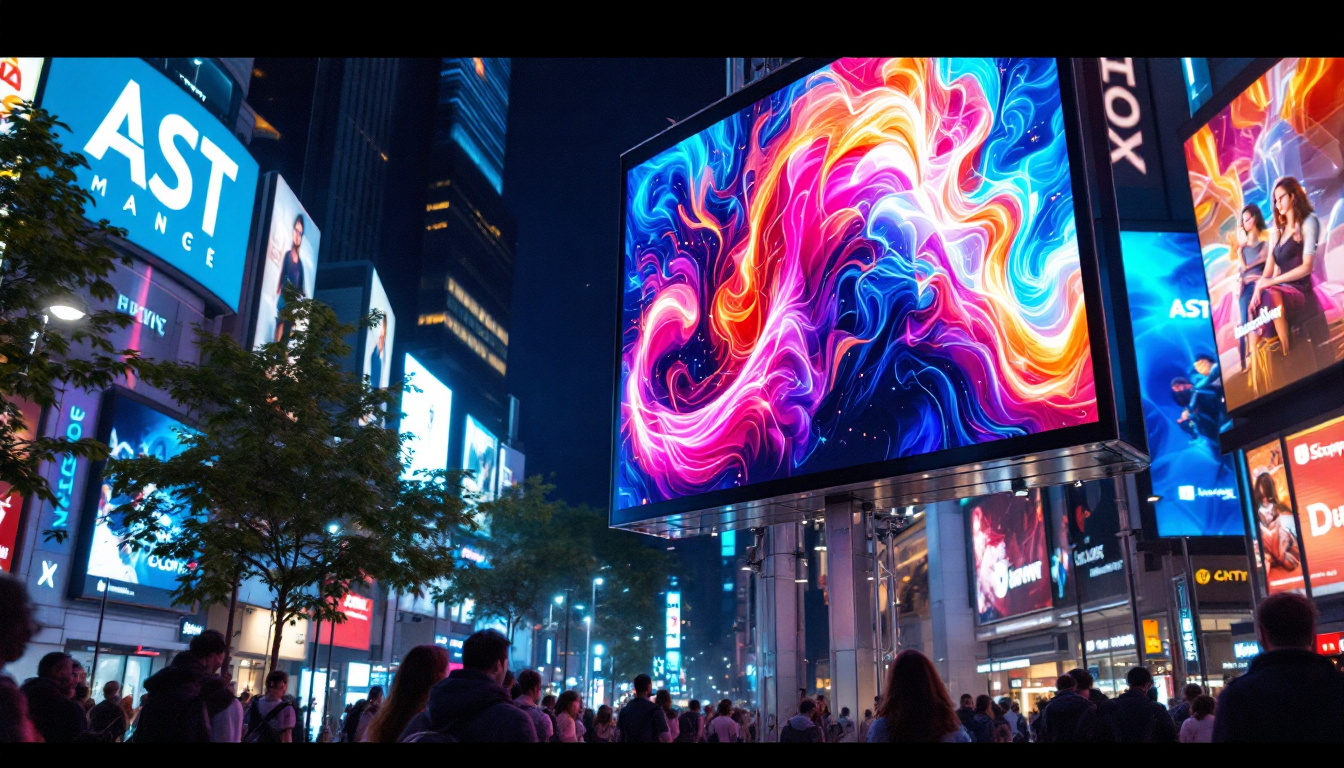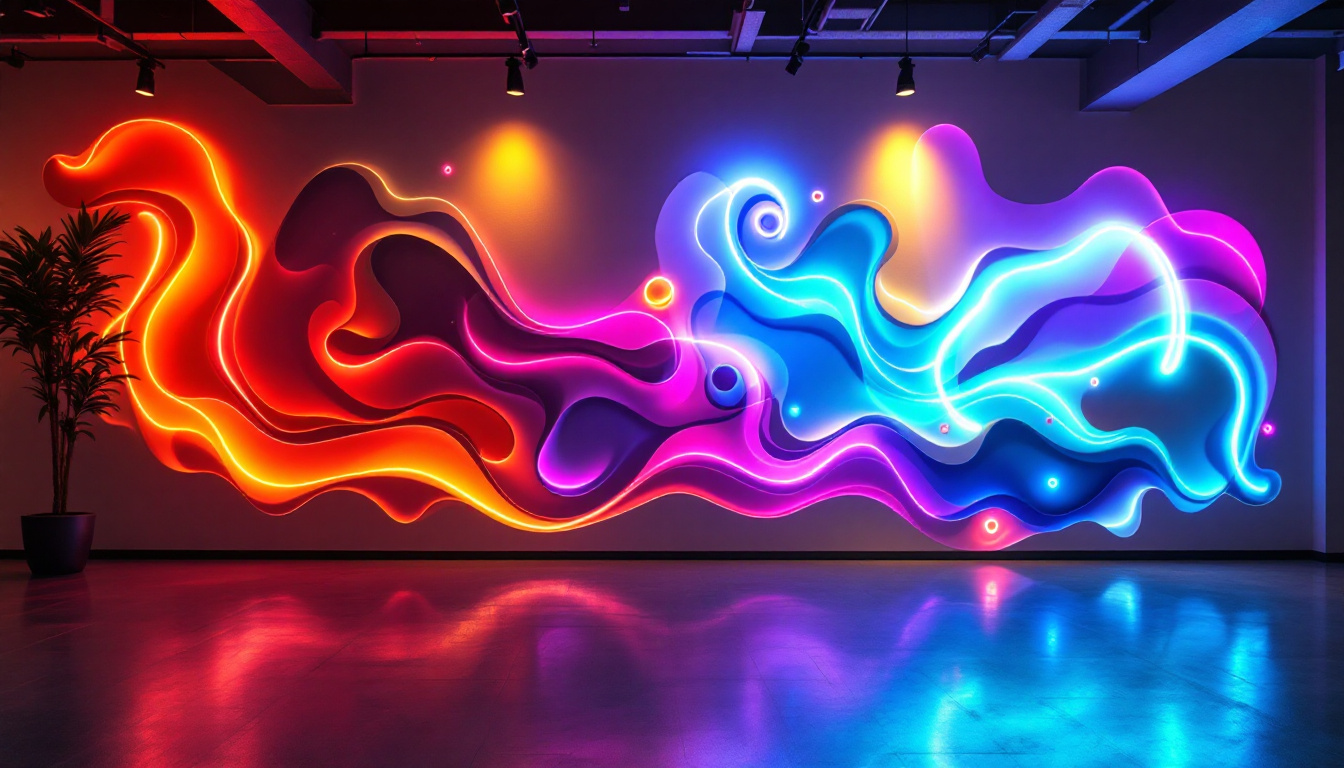In today’s fast-paced business environment, effective communication is crucial. One of the most impactful tools for enhancing communication in the workplace is the digital display screen, particularly LED displays. These screens have become a staple in modern offices, serving various functions from information dissemination to branding. This article delves into the features, benefits, and applications of LED displays in office settings, providing a comprehensive understanding of their significance.
Understanding LED Technology
LED, or Light Emitting Diode, technology has transformed the way visual information is presented. Unlike traditional display technologies, LED screens offer numerous advantages that make them ideal for office environments. Their energy efficiency, longevity, and ability to produce vivid colors have made them a popular choice for businesses looking to enhance their visual communication.
What is an LED Display?
An LED display is a flat panel display that uses light-emitting diodes to produce images and videos. These displays can vary in size, resolution, and brightness, making them suitable for a wide range of applications. The technology works by illuminating pixels with LEDs, which can be individually controlled to create vibrant images and text. This flexibility allows for dynamic content that can be easily updated, ensuring that information remains relevant and engaging for viewers.
How LED Displays Work
LED displays function by utilizing a matrix of tiny LED lights that can change color and intensity. When combined, these lights create a full spectrum of colors, allowing for high-definition images and videos. The brightness levels can be adjusted, ensuring visibility in various lighting conditions, which is particularly important in office settings where ambient light can vary significantly. Additionally, LED technology is known for its rapid response time, which means that images can change quickly without any noticeable lag, making it ideal for displaying real-time data or fast-moving graphics.
Types of LED Displays
There are several types of LED displays available, each designed for specific applications. Common types include:
- Indoor LED Displays: These are typically used for presentations, meetings, and internal communications. They often feature higher pixel densities for close viewing, ensuring clarity even from short distances.
- Outdoor LED Displays: Designed to withstand the elements, these displays are often used for advertising and public announcements. They are built with robust materials to resist weather conditions and are equipped with higher brightness levels to ensure visibility in direct sunlight.
- Transparent LED Displays: These innovative displays allow for visibility through the screen, making them ideal for retail environments. They can create eye-catching advertisements while still allowing customers to see the products behind the display, merging digital and physical shopping experiences.
Furthermore, LED technology has also paved the way for advancements in interactive displays. Touch-enabled LED screens are becoming increasingly common in conference rooms and collaborative workspaces, allowing users to engage directly with content. This interactivity can enhance presentations and meetings, making them more dynamic and participatory. As LED technology continues to evolve, we can expect to see even more innovative applications that leverage its unique capabilities to improve communication and engagement in various settings.
Benefits of LED Displays in the Office
Integrating LED displays into office spaces offers numerous advantages that can enhance productivity and communication. Here are some of the key benefits:
Enhanced Visibility and Clarity
One of the most significant advantages of LED displays is their high visibility. The brightness and clarity of LED screens ensure that information is easily readable from various distances and angles. This is particularly beneficial in large office spaces where information needs to be communicated effectively to a wide audience. Furthermore, the vibrant colors and sharp contrasts of LED displays can capture attention more effectively than traditional displays, making them ideal for presentations and important announcements. This capability not only helps in conveying messages clearly but also in keeping employees engaged and informed.
Energy Efficiency
LED technology is known for its energy efficiency compared to traditional display technologies. LED displays consume less power, which can lead to significant cost savings on energy bills. Additionally, their long lifespan reduces the need for frequent replacements, further contributing to sustainability efforts within the office. This eco-friendly aspect aligns with the growing trend of corporate responsibility, where companies aim to reduce their carbon footprint. By opting for LED displays, businesses can not only save money but also promote a greener workplace, which can enhance their reputation among clients and employees alike.
Versatility and Customization
LED displays are highly versatile and can be customized to meet specific needs. Whether it’s displaying real-time data, showcasing company branding, or providing information during meetings, these screens can adapt to various content types. Their modular design allows for flexible configurations, enabling businesses to create unique display setups that fit their office layout. Additionally, the ability to integrate interactive features, such as touch screens or live updates, can further enhance user engagement. This adaptability makes LED displays an excellent choice for dynamic environments where information needs to be updated frequently, ensuring that employees have access to the latest data and announcements at all times.
Moreover, LED displays can serve as a central hub for collaboration in the office. By connecting multiple screens, teams can share presentations, brainstorm ideas, and visualize projects in real-time, fostering a more collaborative atmosphere. The integration of software solutions that allow for remote access and control of these displays also means that teams can stay connected, even when working from different locations. This level of interactivity not only streamlines communication but also encourages creativity and innovation among team members, making LED displays a vital tool in modern office environments.
Applications of LED Displays in Office Environments
LED displays can be utilized in numerous ways within an office setting. Their adaptability makes them suitable for various applications that enhance communication and engagement.
Digital Signage
digital signage is one of the most common applications of LED displays in offices. These screens can be used to showcase important announcements, company news, and event schedules. By providing real-time updates, digital signage keeps employees informed and engaged, fostering a more connected workplace.
Meeting Room Displays
In meeting rooms, LED displays serve as powerful tools for presentations and video conferencing. Their high resolution and vibrant colors enhance the viewing experience, making it easier for participants to engage with the content. Furthermore, many LED displays come equipped with smart features that allow for seamless connectivity with various devices, streamlining the presentation process.
Interactive Displays
Interactive LED displays are becoming increasingly popular in office environments. These screens allow users to engage directly with the content, whether through touch or gesture controls. Such interactivity can facilitate brainstorming sessions, training programs, and collaborative projects, making meetings more dynamic and productive.
Choosing the Right LED Display for Your Office
When selecting an LED display for an office, several factors must be considered to ensure the right fit for specific needs.
Size and Resolution
The size of the display should be determined by the space available and the intended use. Larger screens may be necessary for open areas where information needs to be visible from a distance, while smaller displays may suffice for meeting rooms. Additionally, the resolution of the display is crucial; higher resolutions provide clearer images, which is especially important for detailed presentations.
Brightness and Viewing Angle
Brightness is another critical factor, particularly for displays that will be used in brightly lit environments. A higher brightness level ensures visibility even in direct sunlight. Furthermore, the viewing angle is essential for ensuring that everyone in the room can see the content clearly, regardless of their position.
Connectivity Options
Consider the connectivity options available with the LED display. Many modern displays come equipped with multiple ports, including HDMI, USB, and wireless connectivity. This flexibility allows for easy integration with various devices, enhancing the overall functionality of the display.
Installation and Maintenance of LED Displays
Proper installation and maintenance are crucial for maximizing the lifespan and performance of LED displays. Understanding the best practices can help ensure that these screens operate efficiently.
Installation Considerations
When installing an LED display, it is essential to consider the location and mounting options. Displays should be positioned at eye level for optimal viewing and should be securely mounted to prevent accidents. Additionally, ensuring proper cable management can help maintain a clean and professional appearance.
Regular Maintenance
Regular maintenance is vital for keeping LED displays in top condition. This includes routine cleaning to remove dust and fingerprints, as well as periodic checks for software updates and performance issues. Establishing a maintenance schedule can help identify potential problems early, ensuring the display remains functional and effective.
Future Trends in LED Display Technology
The world of LED display technology is constantly evolving, with new advancements emerging regularly. Understanding these trends can help businesses stay ahead of the curve and make informed decisions about their display needs.
Increased Integration with Smart Technology
As smart technology continues to advance, LED displays are increasingly being integrated with IoT (Internet of Things) capabilities. This integration allows for enhanced functionality, such as remote management and real-time data updates. Businesses can leverage these features to create more dynamic and responsive communication systems.
Improved Energy Efficiency
Future developments in LED technology are likely to focus on further improving energy efficiency. Innovations in materials and design can lead to displays that consume even less power while maintaining high brightness and clarity. This shift not only benefits the environment but also reduces operational costs for businesses.
Enhanced Interactivity and User Experience
As user experience becomes a focal point in technology design, LED displays are expected to offer more interactive features. This includes advancements in touch technology, gesture recognition, and augmented reality capabilities, allowing for a more engaging and immersive experience in office settings.
Conclusion
LED displays have become an integral part of modern office environments, offering a range of benefits that enhance communication, productivity, and engagement. Understanding the technology behind these displays, their applications, and the best practices for selection and maintenance can empower businesses to make informed decisions. As technology continues to evolve, staying abreast of trends will ensure that organizations can leverage LED displays to their fullest potential, creating dynamic and effective workplace environments.
Discover LumenMatrix LED Display Solutions
Ready to elevate your office environment with cutting-edge LED display technology? LumenMatrix is at the forefront of innovation, offering a wide array of LED display modules designed to enhance brand visibility and create immersive visual experiences. From Indoor and Outdoor LED Wall Displays to specialized solutions like Vehicle LED Displays, LED Sports Displays, and Custom LED Displays, we have everything you need to transform your visual communication. Experience the power of our All-in-One LED Display and LED Transparent Display to captivate your audience and convey your message with unparalleled clarity. Don’t miss out on the opportunity to revolutionize your workspace. Check out LumenMatrix LED Display Solutions today and step into the future of digital signage.


